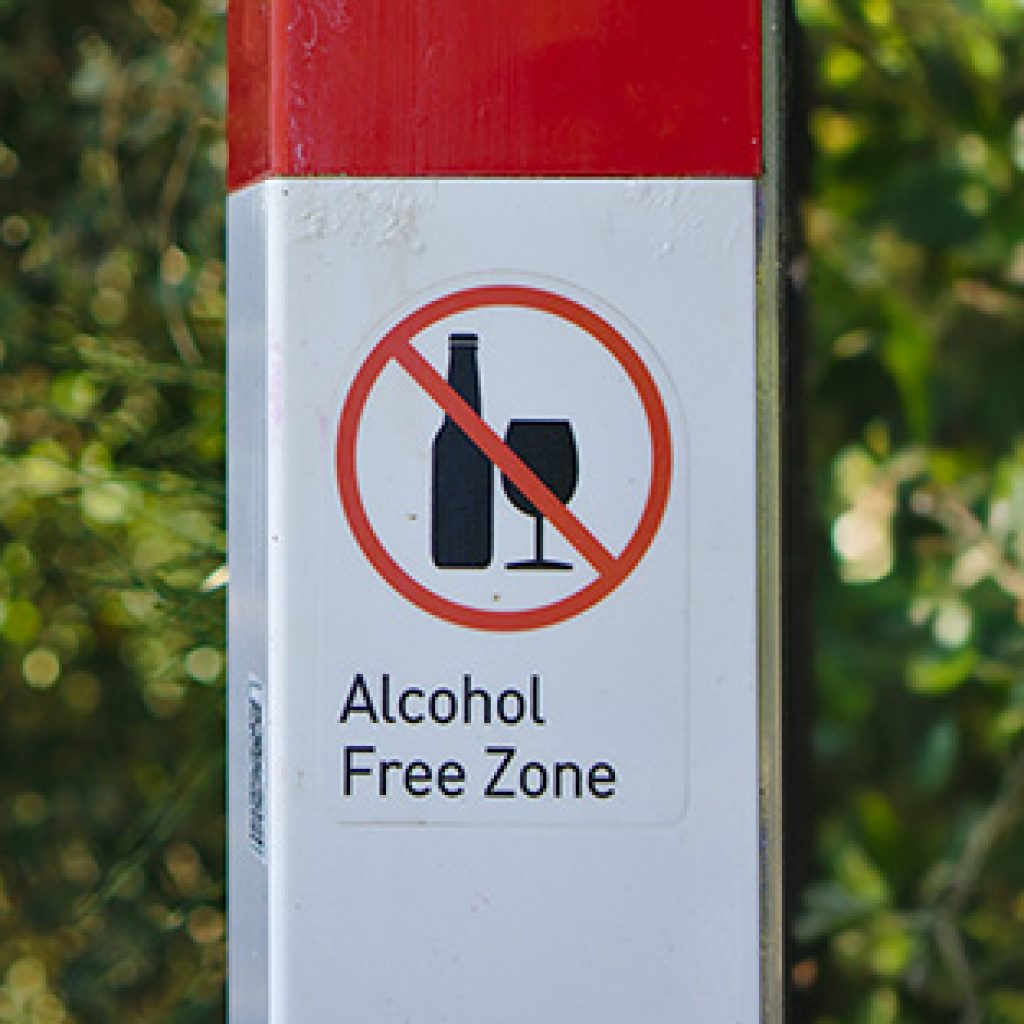New from SAMHSA: Psychosocial Interventions for Older Adults With Serious Mental Illness
New from SAMHSA: Psychosocial Interventions for Older Adults With Serious Mental Illness
The Substance Abuse and Mental Health Services Administration (SAMHSA) recently released a new publication in the Evidence-Based Resource Guide Series. The report, Psychosocial Interventions for Older Adults With Serious Mental Illness, is part of a series designed to improve health outcomes for those who are at risk for, experiencing, or recovering from mental health and/or substance use disorders (SAMHSA, 2021). As with other documents in the series, it is part of the effort to deliver the results of research into the hands of providers in the field to improve service delivery, effectiveness of treatment, and quality of support services for those with substance use disorders (SUDs), serious mental illness (SMI), and serious emotional disturbances (SEDs).
Serious Mental Illness: A Definition
Serious mental illness (SMI) is “a mental, behavioral, or emotional disorder resulting in serious functional impairment that significantly interferes with or limits one or more major life activities” (SAMHSA, 2020, as cited in SAMHSA, 2021, p. 4). The report covers only the disorders that meet the criteria for SMI, such as schizophrenia-spectrum disorders, bipolar disorder, and severe or treatment-resistant depression with persistent functional impairment.
Why Optimal Treatment for Aging Populations is Critical
According to the guide, there are many reasons the treatment of SMI in aging adults is so important. The guide defines older adults as those aged 50 or older and some data in the guide are for adults aged 65 and older due to easy access. Some of the reasons older adults must be treated – and treated effectively – include:
- The shift in demographics that has resulted in a 39% increase in the older adult population and a projected total of 5.7 million people aged 50 years or older by the year 2020 (Han, et al, 2009, as cited in the Catalyst blog post UPDATED: Older Adults And Substance Use Disorder: How Can Family, Friends And Providers Help?). Current projections state that by the year 2030 1 in 5 Americans, or about 72 million people, will be 65 or older (Vespa et al., 2020). According to the guide, “The older adult population in the United States is growing rapidly, with the numbers of 65+ and 85+ expected to increase by almost 50% and over 100%, respectively, in the next 20 years (Source: Urban Institute).” (SAMHSA, 2021). Just by increases in the population alone, additional behavioral health services and systems will be needed.
- Diversity in the United States is rapidly growing. People of color increased from 7.8 million in 2009 to 12.9 million in 2019 and the numbers are predicted to reach 27.7 million by 2040 (Administration for Community Living; 2020; Administration for Community Living, 2021). People of color, including older adult Latino and Black populations, experience higher rates of poverty than Whites and have lower socioeconomic status (SES) as measured by education, income, or occupation. These factors are associated with lower self-rated physical health, faster rates of aging, and SMI that may actually be due to low health literacy caused by lower SES (Clausen et al., 2016; Stormacq et al., 2019).
- Older adults with SMI have a shorter life expectancy and experience higher rates of chronic health conditions, disability, and admissions to nursing homes. Higher rates of diabetes, lung disease, cardiovascular disease, and other medical conditions are experienced more frequently by those with SMI (SAMHSA, 2021).
- While the process of aging does not follow the same timeline or trajectory for all people in a uniform manner, aging itself is associated with many changes that increase vulnerability to both acute and chronic health conditions. Wide variations in biological, physiological, environmental, psychological, and behavioral changes are often accompanied by metabolic changes that occur during aging that make older adults more vulnerable to the side effects of medications, alcohol, and other chemical substances. During this time, older adults often are dealing with life events such as loss of loved ones, friends, family, and mobility while coping with social isolation and cognitive or sensory impairments (SAMHSA, 2021).
- The process of aging is also influenced by other factors such as genetics, environment, diet, trauma, and lifestyle choices. Some of those with SMI experience more rapid aging and reduction in life expectancy (SAMHSA, 2021). At the same time, they may not be able to access health care, particularly preventive care, which increases rates of cardiovascular disease, diabetes, chronic obstructive pulmonary disease (COPD), and cancer. Additional factors that put older adults at risk include chronic stress, trauma, increased risk of suicide, and other factors correlated with reduced SES. Implementing policies and practices that address the social determinants of health is very important in maintaining the health and well-being of older adults. More information about the Social Determinants of Health depicted on the graphic below can be found on the U.S. Department of Health and Human Services (DHHS) website Healthy People 2030.
Figure 1. Social Determinants of Health (Healthy People 2030, 2021)

Note: This circular graphic depicts five elements of social determinants of health surrounding an icon of an individual. The key social determinants of health are education access and quality, healthcare access and quality, neighborhood and built environment, social and community context, economic stability.
Current Practices and Challenges
The knowledge base shows that older adults are less likely than other age groups to receive treatment when needed. With current systems and practices in place, just 25.7% of adults 50 and older with SMI received treatment (Institute of Medicine, 2012). Of those who did receive treatment, 6.5% received inpatient mental health services; 46.5 % received outpatient mental health services; and 66.7% received prescription medication for a mental disorder (SAMHSA, 2021). Older adults are also less likely to receive treatment in a specialized setting and less likely to receive treatment for co-occurring mental health and substance use conditions (Institute of Medicine, 2012). Older Hispanic/Latino and African American adults with SMI are even less likely to receive treatment partly because the culturally and linguistically relevant services, and outreach programs for caregivers and family members have not yet been developed (Institute of Medicine, 2012).
What Providers and Agencies Can Do
Reading this report is a sound first step for providers who want to improve treatment and services for older adults with SMI in their practices, whatever the setting. Within the new report, providers can expect to find details about five practices and programs that have been identified by research as being effective in treating and providing coordinated care for older adults with SMI. Providers can also find an overview of typical settings, demographic groups, intensity and duration, and outcomes for each intervention. The programs or practices listed are:
- Assertive Community Treatment (ACT)
- Cognitive Behavioral Social Skills Training (CBSST)
- Skills training practices, specifically Functional Adaptation Skills Training (FAST) and Programa de Entrenamiento para el Desarrollo de Aptitudes para Latinos (PEDAL)
- Integrated Illness Management and Recovery (I-IMR)
- Helping Older People Experience Success (HOPES)
Information included for each program or practice includes a full description, what criteria were used for the selection of programs and practices, an evidence review and rating for each one, and links to the program materials online. Also included is a list of factors to use when selecting an appropriate intervention and strategies to use in adapting practices so that program fidelity is maintained. An entire chapter is devoted to examples of programs for older adults with SMI and lists of resources for each one. Continuous quality improvement can be achieved by using the final chapter of the report that is dedicated to resources for evaluation and quality improvement.
Training Opportunities and Resources
A sound second step for attaining expertise and competence in the area of treating older adults with SMI might be professional development, particularly in the topics of older adults, serious mental illness and particular disorders, and in the specific practices and programs featured in the new report.
- CASAT Learning offers the following self-paced online courses:
- Addiction Among the Aging led by Teresa Sacks, M.P.H.& Angela Broadus, PhD, CPS. “Addictions among the aging are a serious public health concern often referred to as an “Invisible Epidemic.” Too often warning signs of addiction are misinterpreted as signs of aging or other age-related conditions. This self-paced, online course will provide you with the fundamentals necessary to serve your elder clients.”
- Signs and Symptoms of Substance Use, Gambling and Mental Health Issues – Recovery Friendly Workplace Training led by Mark Disselkoen, MSSW, LCSW, LCADC. “ Signs and Symptoms of Substance Use, Gambling and Mental Health Issues: Provide participants with an understanding of issues related to substance use, gambling and mental illness. Emphasis should be on identifying signs and symptoms of substance use, problematic substance use, gambling and mental illness and how these symptoms can interact with one another. Additionally, strategies should be discussed regarding how to effectively engage an employee to seek help when these issues are negatively impacting work performance.”
- For additional in-person training and workshops visit the CASAT Learning Calendar that is being updated continually.
- The Addiction Technology Transfer Center Network is always a useful resource for information and training opportunities. Some of the relevant current opportunities include:
- SAMHSA: SAMHSA offers many resources and links. Those especially useful for SMI include:
- A New SAMHSA app that will help people who have serious mental illness to develop a crisis plan;
- My Mental Health Crisis Plan is available in the Apple App Storeand Google Play. View videos on What is a PAD? and How to Use the App. More information at: smiadviser.org/mymhcp;
- SMI Adviser – SMI Adviser is funded by SAMHSA and administered by the American Psychiatric Association (APA). The APA works closely on this project with a team of experts and 30 other mental health organizations. This team includes individuals, families, clinical experts, peers, and policy makers. For information, visit smiadviser.org.
- The Mental Health Technology Transfer Center Network (MHTTC) works to disseminate and implement evidence-based practices for mental disorders into the field. Some of the SMI related resources pertaining to older adults include:
Additional resources may be found in the CASAT OnDemand Resources & Downloads section. Articles relevant to Aging, SMI, and Disparities in Healthcare, can be found in the Catalyst blog. A few of those available include:
- Breaking Down Barriers to Treatment: Reaching Parity for Rural Clients with Co-occurring Substance Use Disorders and Serious Mental Illness.
- Seniors and Suicide: Nevada Programs for Helping Seniors to Stay Healthy
- Wellness Across the Lifespan
- Recovery in Special Emphasis Populations: Leveling the Playing Field
Your Turn: What are the disparities that you notice most frequently in the treatment of older adults with SMI? Please share in the comments below.
References
Administration for Community Living. (2021). 2020 Profile of older Americans. US Department of Health & Human Services. https://acl.gov/sites/ default/files/Aging%20and%20Disability%20in%20 America/2020ProfileOlderAmericans.Final_.pdf
Administration for Community Living. (2020). 2019 Profile of older Americans. US Department of Health & Human Services. https://acl.gov/sites/ default/files/Aging%20and%20Disability%20in%20 America/2019ProfileOlderAmericans508.pdf
Clausen, W., Watanabe-Galloway, S., Bill Baerentzen, M., & Britigan, D. H. (2016). Health literacy among people with serious mental illness. Community Mental Health Journal, 52(4), 399-405. https://doi.org/10.1007/s10597-015-9951-8
Healthy People 2030, U.S. Department of Health and Human Services, Office of Disease Prevention and Health Promotion. Retrieved November 9, 2021, from https://health.gov/healthypeople/objectives-and-data/social-determinants-health
Institute of Medicine. (2012). The mental health and substance use workforce for older adults: In whose hands? (J. Eden, K. Maslow, M. Le, & D. Blazer, Eds.). The National Academies Press. https://doi.org/ doi:10.17226/13400
Stormacq, C., Van den Broucke, S., & Wosinski, J. (2019). Does health literacy mediate the relationship between socioeconomic status and health disparities? Integrative review. Health Promotion International, 34(5), e1-e17. https://doi.org/10.1093/heapro/day062
Substance Abuse and Mental Health Services Administration. (2020). Mental health and substance use disorders. US Department of Health & Human Services. https://www.samhsa.gov/find-help/ disorders
Substance Abuse and Mental Health Services Administration (SAMHSA). Psychosocial Interventions for Older Adults With Serious Mental Illness. SAMHSA Publication No. PEP21-06-05-001. Rockville, MD: Substance Abuse and Mental Health Services Administration, 2021.
Vespa, Jonathan, Lauren Medina, and David M. Armstrong, “Demographic Turning Points for the United States: Population Projections for 2020 to 2060,” Current Population Reports, P25-1144, U.S. Census Bureau, Washington, DC, 2020.
This article was developed by Stephanie Asteriadis Pyle, PhD at CASAT. Feel free to use, link to, or distribute this information. A link to our site and attribution would be much appreciated. Suggested citation:
Asteriadis Pyle, S. (2021, March 4). New from SAMHSA: Psychosocial Interventions for Older Adults With Serious Mental Illness. CASAT OnDemand. Retrieved November 12, 2021, from https://casatondemand.org/the-catalyst/.
Blog Post Tags:
Related Blog Posts
Related Learning Labs
Related Resources
.
- Buscar Tratamiento de Calidad para Trastornos de uso de Sustancia (Finding Quality Treatment for Substance Use Disorders Spanish Version)
- Finding Quality Treatment for Substance Use Disorders
- Focus On Prevention: Strategies and Programs to Prevent Substance Use
- Monthly Variation in Substance Use Initiation Among Full-Time College Students
- The National Survey on Drug Use and Health (NSDUH) Report: Monthly Variation in Substance Use Initiation Among Adolescents








